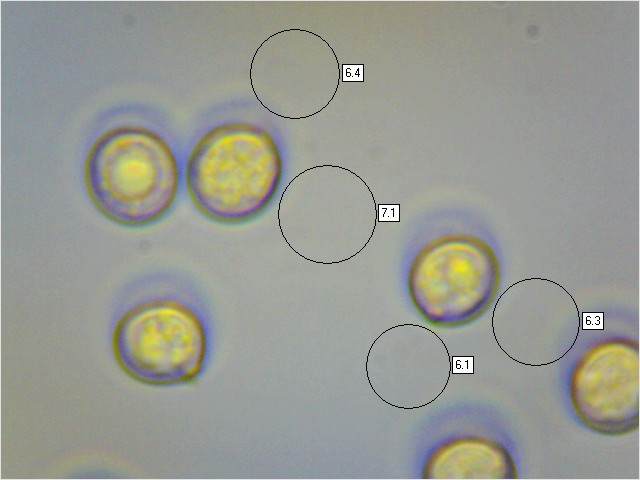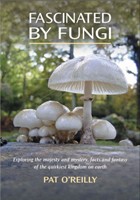Pluteus romellii (Britzelm.) Sacc. - Goldleaf Shield
Phylum: Basidiomycota - Class: Agaricomycetes - Order: Agaricales - Family: Pluteaceae
Distribution - Taxonomic History - Etymology - Identification - Culinary Notes - Reference Sources
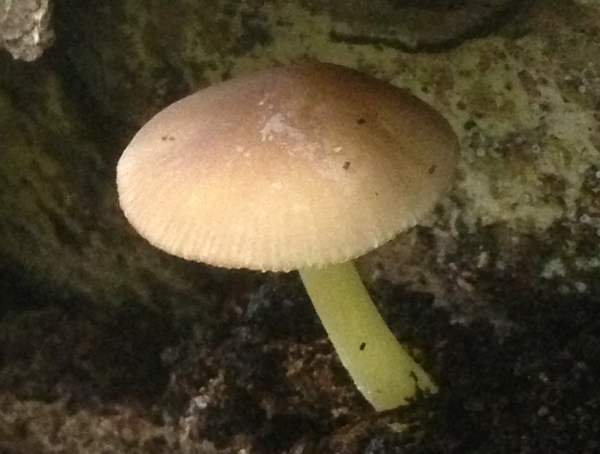
Pluteus romellii is a distinctive wood-rotting fungus of broadleaf (hardwood) and mixed woodlands.
Distribution
In Britain this rather uncommon fungus is found throughout England, Wales and Scotland; it is also found in Ireland.The Goldleaf Shield is also found in many parts of mainland Europe.
Taxonomic history
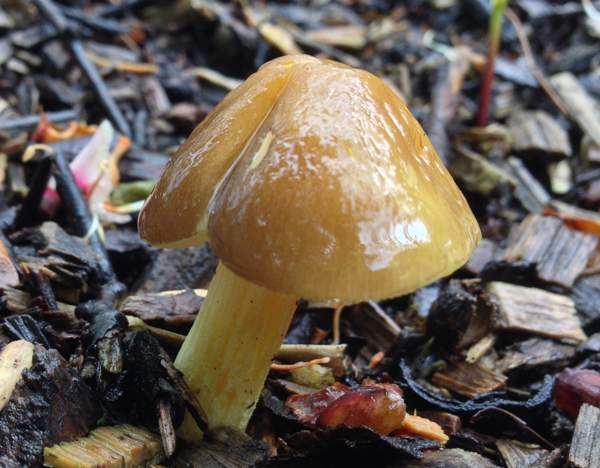
The basionym of this species was established when the Goldleaf Shield was described in 1891 by German mycologist Max Britzelmayr (1839 - 1909), who gave it the name Agaricus romellii. It was Italian mycologist Pier Andrea Saccardo who, in 1895, transferred this species to the genus Pluteus, whereupon its scientific name became Pluteus romellii.
Synonyms of Pluteus romellii include Agaricus romellii Britzelm., Agaricus nanus var. lutescens Fr., Pluteus nanus var. lutescens (Fr.) P. Karst., Pluteus lutescens (Fr.) Bres., and Pluteus splendidus A. Pearson.
Etymology
Pluteus, the genus name, comes from Latin and literally means a protective fence or screen - a shield for example! The specific epithet romellii honours Swedish mycologist Lars Rommel (.1854 - 1927), one-time associate editor of Mycologia.
Identification guide
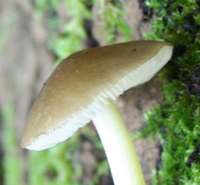 |
CapSmooth near the rim but often wrinkled towards the centre, dark cinnamon brown in the centre but often more yellow towards the margin, initially convex and usually flattening with a low broad umbo, the caps are 1.5 - to 5cm in diameter. The thin cap flesh is translucent white and firm. |
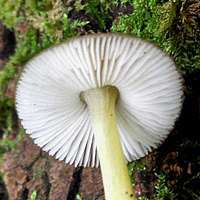 |
GillsWhite or yellow at first, becoming pinkish yellow, the gills are broad, crowded and free. StemLemon yellow, but more chrome yellow towards the base, often broadening at base; longitudinally striate; 2 to 6mm in diameter and 2 to 7cm long. The stem flesh is yellow. |
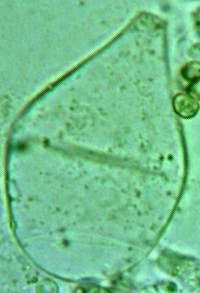 |
PleurocystidiaGill-face cystidia are thin walled and vary in shape from broadly vesiculose (left) to clavate or cylindrical; not ornamented with horns CheilocystidiaGill-edge cystidia are similar to the pleurocystidia.. |
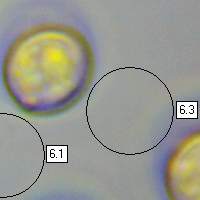 |
SporesBroadly ellipsoidal, smooth, typically 6.5 x 5.5µm. Spore printPink. |
Odour/taste |
Not distinctive. |
Habitat & Ecological role |
Saprobic, usually solitary on well-rotted long-dead stumps, buried rotting fallen branches, sawdust, wood chips,and other woody debris of broadleaf trees, particularly beech, ash and occasionaly blackthorn and elder. |
Season |
Fruiting from early summer to late autumn, provided the weather is mild. Most often fruiting from mid summer to mid autumn. |
Similar species |
Pluteus umbrosus has a darker brown wrinkled cap and is generally a little smaller. Pluteus cervinus has a smooth brown or fawn cap. |
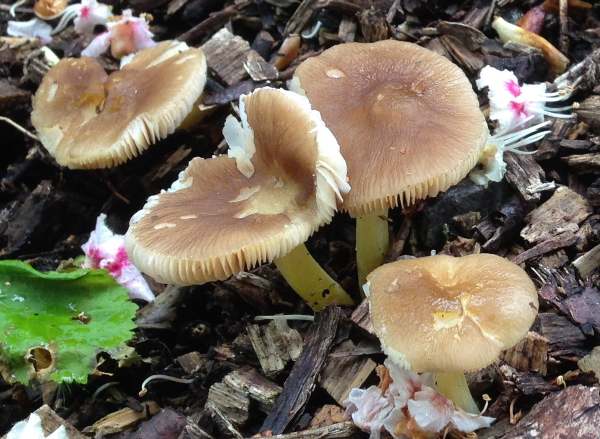
Culinary Notes
The Goldleaf Shield mushroom Pluteus romellii is reported to be edible but caution is advisable, especially if you have any doubts about identification, because some fungi in the genus Pluteus contain the toxin Psilocybin.
Reference Sources
Alfredo Justo, Andrew M. Minnis, Stefano Ghignone, Nelson Menolli Jr., Marina Capelari, Olivia Rodríguez, Ekaterina Malysheva, Marco Contu, Alfredo Vizzini (2011). 'Species recognition in Pluteus and Volvopluteus (Pluteaceae, Agaricales): morphology, geography and phylogeny'. Mycological Progress 10 (4): 453–479.
Orton, P.D. (1986). British Fungus Flora: Agarics and Boleti. Vol 4. Pluteaceae: Pluteus & Volvariella. Royal Botanic Garden: Edinburgh, Scotland.
Funga Nordica, Henning Knudsen and Jan Vesterholt, 2008.
BMS List of English Names for Fungi
Dictionary of the Fungi; Paul M. Kirk, Paul F. Cannon, David W. Minter and J. A. Stalpers; CABI, 2008
Taxonomic history and synonym information on these pages is drawn from many sources but in particular from the British Mycological Society's GB Checklist of Fungi.
Acknowledgements
This page includes pictures kindly contributed by Simon Harding and Zoran Bovovic.
Fascinated by Fungi. Back by popular demand, Pat O'Reilly's best-selling 450-page hardback book is available now. The latest second edition was republished with a sparkling new cover design in September 2022 by Coch-y-Bonddu Books. Full details and copies are available from the publisher's online bookshop...
